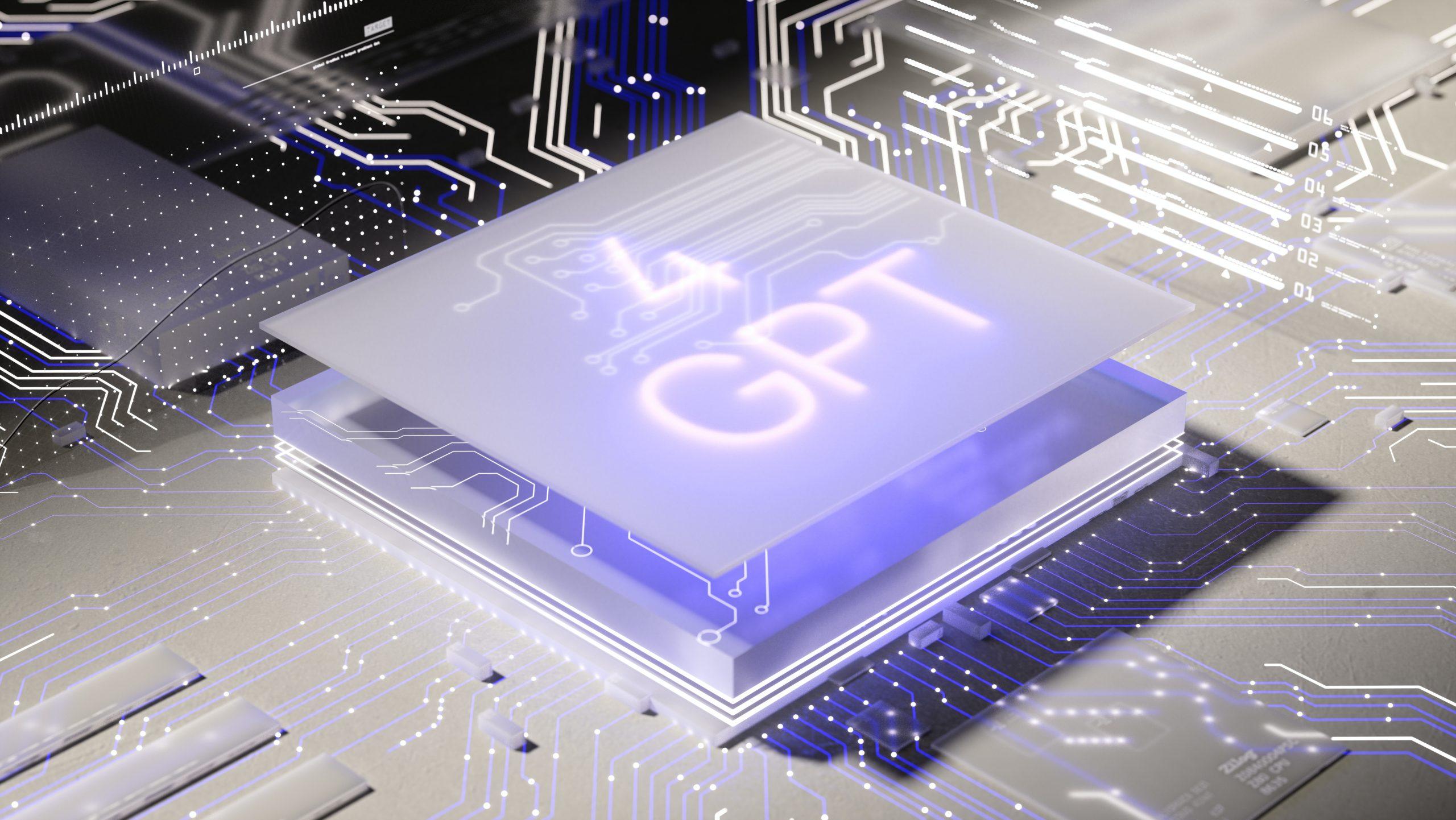
What Is GPT-4? Plus, The Latest Developments In Bing AI & Google Bard
Ritesh Shah
11 min read

Modern technology has enabled machines to understand and generate human-like language. Among the notable advancements in this field, the series of GPTs have garnered significant attention. These language models have pushed the boundaries of AI capabilities, providing remarkable applications across various domains. But what is GPT-4, and how does it work?
Previously, we’ve looked into what ChatGPT is and how it works. In this article, we explore GPT-4 in detail, discussing its capabilities, potential applications, and the exciting developments it brings to Bing AI and Google Bard. Journey into the realm of GPT-4 and discover the latest advancements that are shaping our interaction with technology and unlocking new horizons of human-like language generation.
Before diving in, let’s first gain some context behind the tech. GPT-4, Bing AI, and Google Bard all depend on two pieces of modern technology: artificial intelligence and natural language processing. What are these, and how have they helped bring about this technological revolution?
Artificial Intelligence & Natural Language Processing 🧠
Artificial Intelligence (AI) is a branch of computer science that deals with developing computer programs that can do tasks that typically require human intelligence, such as speech recognition, visual perception, language translation, and decision-making.
On the other hand, Natural Language Processing (NLP) is a subfield of AI focusing on teaching computers to understand, interpret, and generate human language. It involves using statistical models and algorithms to analyse and comprehend natural language data.
Language model systems like GPT-4 use AI and NLP to generate human-like text responses based on their input. This enables them to understand context, syntax, and semantics to produce coherent and relevant responses to user queries, making interactions with technology more human-like and personalised.
Now that we know a bit about how AI and NLP come together to develop chatbots and automated speech systems like Amazon Alexa, let’s see how things evolved into GPT-4.
The Evolution Of GPTs 📈
GPT stands for “Generative Pre-trained Transformer”, a type of language generation model developed using AI and NLP. The purpose of GPT models is to generate human-like text in response to a given prompt, such as a question or sentence.

The first GPT model, GPT-1, was developed by OpenAI in 2018. A massive corpus of internet text data was used to train it, including websites, books, and other sources, using unsupervised learning techniques. This allowed the model to develop a deep understanding of language patterns and structures, enabling it to generate coherent and natural-sounding text.
GPT-2 was introduced in 2019 and significantly improved over GPT-1. It could generate coherent and relevant text and complete complex tasks such as summarisation, translation, and question-answering.
Introduced in 2020, GPT-3 was a major breakthrough in NLP. It could do everything GPT-2 could, all the while generating even higher-quality, human-like text. Additionally, GPT-3 could perform tasks that required common sense reasoning, such as generating responses to analogies, which was previously thought to be beyond their capabilities.
GPT models have been made possible by recent advancements in machine learning and NLP technologies, including deep learning neural networks and transformer architectures. These have enabled researchers to develop models capable of processing and generating language with a level of sophistication and accuracy that was previously thought impossible.
What Is GPT-4? 🤷
GPT-4 is the fourth generation of language models developed by OpenAI. Like its predecessors, GPT-4 is designed to process and understand natural language input and generate human-like responses to a wide range of queries.
Both GPT-2 and GPT-3 made significant advancements over their predecessors in terms of their ability to generate high-quality, human-like text and perform complex tasks. Their increased capabilities have opened up new possibilities for using AI in natural language processing and other fields.
However, where GPT-3 was already a groundbreaking achievement, with 175 billion parameters, GPT-4 promises to be even more powerful and versatile, with the ability to handle even more complex tasks with greater accuracy and speed. GPT-4’s language generation capabilities are incredibly accurate, representing a significant improvement over its predecessor.
Thanks to the use of unsupervised learning and a larger dataset than ever before, GPT-4 can generate human-like text with greater speed and accuracy than previous models. This is achieved through a combination of sophisticated algorithms and neural network architectures that enable the model to better understand the meaning of words in the context of the sentence and the wider document.
While GPT-4 isn’t perfect and may occasionally produce errors or inaccuracies, it’s widely regarded among the most advanced natural language processing tools available today. Its enhanced accuracy and contextual understanding make it invaluable for businesses and individuals looking to generate high-quality text quickly and efficiently.
Capabilities Of GPT-4 🤹
🎯 Enhanced Accuracy & Speed
GPT-4 boasts enhanced accuracy and speed, with the ability to generate human-like text more quickly and accurately than its predecessor, GPT-3. This is achieved through an innovative approach to training, using unsupervised learning and a larger dataset than ever before. As a result, GPT-4 can produce more coherent and relevant responses.
🗣 Multilingual Capabilities
A top feature of this modern technology is its multilingual capabilities, generating text in multiple languages and helping businesses with global reach. This is gradually revolutionising the way companies communicate with customers and clients worldwide, enabling them to create content in their native language quickly and accurately.
🕵 Improved Contextual Understanding
GPT-4’s contextual understanding has been greatly improved, allowing it to generate text that’s more contextually relevant and accurate. This is attained through the use of a new neural architecture, enabling the model to better understand the meaning of words in the context of the sentence and the wider document. This makes GPT-4 an ideal tool for creating informative as well as engaging content that resonates with its intended audience.
🔗 Seamless Integration
Moreover, GPT-4 has been designed with ease of use in mind, making it simple to integrate with existing systems and workflows. The model can be easily integrated with various applications, including virtual assistants, chatbots, and content creation tools. This means that businesses can easily leverage the power of GPT-4 to improve productivity and streamline operations.
How Does GPT-4 Work? ⚙️
At its core, GPT-4 is a neural network trained using vast amounts of text data from a wide range of sources to learn patterns and relationships between words, phrases, and sentences. Through unsupervised learning, the model learns from the data without explicit instruction or supervision from humans. This allows it to use all that processed data to generate responses to new inputs.

Unlike previous language models, however, GPT-4 is expected to incorporate a wider range of contextual information into its responses, allowing it to better understand the nuances of human language.
GPT-4 uses a deep neural network architecture called a transformer, which is specifically designed for NLP tasks. The transformer consists of multiple layers of interconnected nodes, each performing a specific function in the text-processing pipeline.
These layers work together to enable the model to understand the context and meaning of the words in a given sentence or document, allowing it to generate coherent and contextually appropriate responses.
The Latest In Microsoft’s Bing AI 🖥️
🌐 What Is Bing AI?

Bing AI is a suite of artificial intelligence (AI) technologies developed by Microsoft to improve the accuracy and relevance of search results. It encompasses a range of machine learning and natural language processing tools, including GPT-4, which has been integrated into Bing AI to enhance its capabilities. It was launched as a beta version of Bing on February 7, 2023.
Prometheus, the new AI-powered Bing search engine, generates answers to user queries rather than directing them to external sites. Key features include a search sidebar with comprehensive answers, complete textual answers to questions, itinerary planning, and email composing. The open preview version of the new Bing is now available, allowing users all over the world to sample it and sign up for the waitlist.
As users interact with Bing AI, websites become the source material for the search process, with results produced through a co-creation process between user and bot. This creates a seamless experience, with Bing AI sifting through the barrage of online information to provide users with accurate and comprehensive answers to their search queries.
🤝 GPT-4 Integration Into Bing AI
The integration of GPT-4 into Bing AI allows for more advanced natural language processing and understanding, enabling Bing to better interpret user queries and generate more relevant search results. By leveraging GPT-4’s language generation capabilities, Bing can provide more comprehensive and informative answers to user queries, as well as better understand the intent behind those queries.
In addition to improving the relevance of search results, the integration of GPT-4 into Bing AI helps enhance the user experience by providing more engaging and interactive search experiences. For instance, Bing uses GPT-4 to generate rich snippets, such as product descriptions or event information, directly on the search results page, not requiring users to click through to external websites.
The integration of GPT-4 into Bing AI represents a significant advancement in the field of search technology, enabling Bing to provide more accurate, relevant, and engaging search experiences for its users. As AI technologies continue evolving and improving, we can expect to see even greater enhancements to search functionality and user experience in the future.
The Latest In Google Bard 🔎
⌨️ What Is Google Bard?

Google Bard is an AI-powered chatbot that uses NLP and ML to simulate human conversations. It’s built on the Language Model for Dialogue Applications (LaMDA) technology, which was designed using Google’s Transformer neural network architecture. Bard is designed around search functionality, aiming to make natural language queries possible.
Google Bard was initially announced on Feb. 6, 2023, and began rolling out on March 21, 2023, with users invited to join a waitlist. However, Google’s live demo of Bard at the announcement event produced an incorrect answer, which caused a significant decrease in market value for Google in the subsequent days.
Currently, Bard is available only in the US and the UK, with plans to expand to other countries. To use it, you must be at least 18 years of age and have a personal Google account. As of now, there’s no indication from Google that Bard will be a paid service. The assumption is that Bard will be integrated into Google’s search engine for free use.
🧐 What Can You Do With Bard?
Google Bard is an AI-powered assistant that can help you with a variety of tasks. You can use it to find specific information, schedule meetings, set reminders, and more. You can also use it to generate reports and analyse data. Plus, with its advanced integration capabilities, you can automate processes and increase efficiency.
Moreover, you can integrate Bard into websites, messaging platforms or applications to provide natural language responses to user questions. Bard is trained using natural-sounding conversational queries and responses and provides context to its answers. Unlike traditional search engines, Bard can also help with follow-up questions.
As Bard is still being rolled out, its full limitations remain unknown. However, users must remember that AI chatbots like Bard must be trained on accurate information to provide relevant responses.
Key Takeaways: GPT-4, Bing AI & Google Bard 📖
The world of Artificial Intelligence and Natural Language Processing continues to evolve at a remarkable pace, and the advent of GPT-4 marks a significant milestone in this journey. Its integration into Bing AI and Google Bard further amplifies its impact, providing enhanced search experiences and empowering users to unleash their creativity through AI-powered language generation.
Additionally, the development of GPT-4 is likely to have broader implications for the field of AI as a whole. By raising the bar on what’s possible with language models, GPT-4 could help to unlock new insights and discoveries in a wide range of related fields.
As we embrace the capabilities of GPT-4, it’s crucial to continue exploring the ethical implications and responsible use of AI and NLP. With great power comes great responsibility, and by harnessing these technologies thoughtfully, we can shape a future where AI augments human creativity and understanding while upholding our values and principles.
For an extensive consultation and technology review, book a discovery meeting today! We’re happy to help you utilise modern technologies to the fullest to ensure you level up your business and meet your goals.
Topics
Published On
May 08, 2023

